Book Reviews
Armor of Aletheia
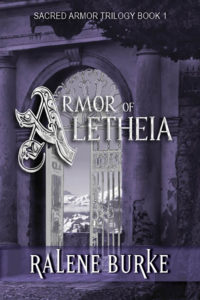 In only two days, Karina becomes queen of Aletheia and prophetess of the Creator. She begins a divine quest to find six holy relics and use them against a powerful warlock—a lot of responsibility, especially for a seventeen-year-old young woman. Ralene Burke’s Armor of Aletheia gives readers classic fantasy suffused with spirituality. Its world is built with elves and griffins and goblins, and the heroine’s quest leads her through colorful landscapes. The author creates settings with particular skill, vividly and efficiently evoking a sense of place. Both established religion and individual spirituality are prominent, driving the characters and forming the world. Although some challenges are easily defeated, especially after the discovery of holy relics, Armor of Aletheia finishes as sweet, colorful fantasy.
In only two days, Karina becomes queen of Aletheia and prophetess of the Creator. She begins a divine quest to find six holy relics and use them against a powerful warlock—a lot of responsibility, especially for a seventeen-year-old young woman. Ralene Burke’s Armor of Aletheia gives readers classic fantasy suffused with spirituality. Its world is built with elves and griffins and goblins, and the heroine’s quest leads her through colorful landscapes. The author creates settings with particular skill, vividly and efficiently evoking a sense of place. Both established religion and individual spirituality are prominent, driving the characters and forming the world. Although some challenges are easily defeated, especially after the discovery of holy relics, Armor of Aletheia finishes as sweet, colorful fantasy.
Best for: YA audiences; female readers; fans of fantasy and Christian fiction.
Discern: Mild violence; villain murders a close family member; drunk ruffian sexually harasses a young woman (someone else intervenes); and a kidnapper implies, to his female victim’s embarrassment, that they are renting a room.
The Bachelor Missions
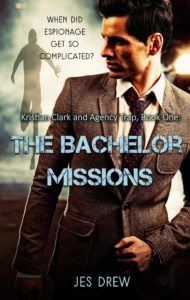 Normal life and romance are difficult enough for a secret agent, but time-traveling doppelganger girlfriend-wannabes who use futuristic weaponry were not covered in the training courses. Jes Drew’s The Bachelor Missions follows our hero, Kristian Clark, through three separate but connected espionage adventures with plenty of romantic difficulties. Because these stories are set in the real world, characters plainly discuss Christianity and some common arguments for and against the faith. Still, God-talk and two conversion scenes remain light in favor of the stories’ light and humorous tone—like Men in Black but without the aliens.
Normal life and romance are difficult enough for a secret agent, but time-traveling doppelganger girlfriend-wannabes who use futuristic weaponry were not covered in the training courses. Jes Drew’s The Bachelor Missions follows our hero, Kristian Clark, through three separate but connected espionage adventures with plenty of romantic difficulties. Because these stories are set in the real world, characters plainly discuss Christianity and some common arguments for and against the faith. Still, God-talk and two conversion scenes remain light in favor of the stories’ light and humorous tone—like Men in Black but without the aliens.
Best for: Young adults, adults, and fans of fun, escapist reading.
Discern: Romantic boundaries get pushed, such as when Kristian and his lady secret agent partner sneak into a cult, or pretend to be married and share a bed, yet no further inappropriate activity is mentioned or endorsed.
The Caves of Fire
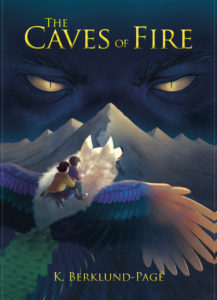 Prophecies cause trouble, even if you don’t live in a fantasy world. In K. Berklund-Pagé’s The Caves of Fire, Canadian twelve-year-old children Daniel and Evie face terrible odds against Javerra, the murderous ruler of a shape-shifting realm. When Javerra kidnaps Daniel’s mom, the children embark on journey to rescue her. Meanwhile, Fee, a slave from the shape-shifting realm, is supposed to lure Daniel in—but finds he doesn’t want to. Can a slave say no? Fee and Daniel struggle with decisions as fully formed characters. Descriptions give a you-are-there flavor, and the world presents unique elements. This fantasy feels mostly dark because of overwhelming odds, until the somewhat puzzling but satisfying ending.
Prophecies cause trouble, even if you don’t live in a fantasy world. In K. Berklund-Pagé’s The Caves of Fire, Canadian twelve-year-old children Daniel and Evie face terrible odds against Javerra, the murderous ruler of a shape-shifting realm. When Javerra kidnaps Daniel’s mom, the children embark on journey to rescue her. Meanwhile, Fee, a slave from the shape-shifting realm, is supposed to lure Daniel in—but finds he doesn’t want to. Can a slave say no? Fee and Daniel struggle with decisions as fully formed characters. Descriptions give a you-are-there flavor, and the world presents unique elements. This fantasy feels mostly dark because of overwhelming odds, until the somewhat puzzling but satisfying ending.
Best for: Readers age twelve and older who like fantasy tales.
Discern: A divine creator is mentioned once, and she is female. Both children directly disobey their parents without consequences.
Chains of Gwyndorr
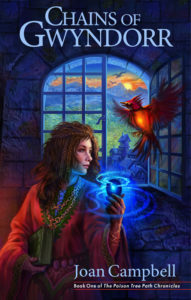 Joan Campbell’s Chains of Gwyndorr traces the daily paths of a varied cast as they slowly entwine toward a climax. A poisonous forest encroaches on a city of conqueror Highborns, who forbid education to the defeated Lowborn caste but remain strangled by their own tyrannical government. Unique worlds and sympathetic characters entice readers through a maze of slow-moving action. Mysterious pasts, destroyed lore, powerful secrets, and a magical red-gold bird bring hope and courage to people in need. Tension rises page by page until the reader’s expectations have been stretched taut. If all the novel’s vague allusions to future revelations bear fruit in the final installment, the Poison Tree Path Chronicles will prove a fantastic series for those who enjoy complex plots.
Joan Campbell’s Chains of Gwyndorr traces the daily paths of a varied cast as they slowly entwine toward a climax. A poisonous forest encroaches on a city of conqueror Highborns, who forbid education to the defeated Lowborn caste but remain strangled by their own tyrannical government. Unique worlds and sympathetic characters entice readers through a maze of slow-moving action. Mysterious pasts, destroyed lore, powerful secrets, and a magical red-gold bird bring hope and courage to people in need. Tension rises page by page until the reader’s expectations have been stretched taut. If all the novel’s vague allusions to future revelations bear fruit in the final installment, the Poison Tree Path Chronicles will prove a fantastic series for those who enjoy complex plots.
Best for: Lovers of in-depth character development and leisurely, tantalizing reads.
Discern: Depictions of cruel beatings, death from toxic flora and overexposure, and practical magic that can induce violent effects.
The 49th Mystic
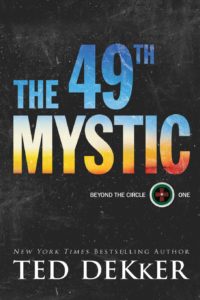 In how many ways can someone’s whole life be a lie? Sixteen-year-old Rachelle Matthews is about to find out. Blind since childhood and confined to a remote survivalist community, she’s haunted by nightmares of a shadowy villain infiltrating her home. Then one day he shows up in the waking world to plunge her into a fantastical parallel reality where she’s a prophesied Mystic with the power to change history. But to stop Shadow Man from blinding both worlds, she must unlearn everything society has taught her. In The 49th Mystic, Ted Dekker overhauls Other Earth with an adventure that’s part The Village, part Scott Pilgrim vs. the World. Fans of Dekker’s Circle Series will enjoy the new episode’s bewilderingly breathless twists and turns, though perhaps not some questionable themes (see below).
In how many ways can someone’s whole life be a lie? Sixteen-year-old Rachelle Matthews is about to find out. Blind since childhood and confined to a remote survivalist community, she’s haunted by nightmares of a shadowy villain infiltrating her home. Then one day he shows up in the waking world to plunge her into a fantastical parallel reality where she’s a prophesied Mystic with the power to change history. But to stop Shadow Man from blinding both worlds, she must unlearn everything society has taught her. In The 49th Mystic, Ted Dekker overhauls Other Earth with an adventure that’s part The Village, part Scott Pilgrim vs. the World. Fans of Dekker’s Circle Series will enjoy the new episode’s bewilderingly breathless twists and turns, though perhaps not some questionable themes (see below).
Best for: Young adults and adults willing to wade through polemical mysticism to access mind-bending thrills.
Discern: Soft-gnostic themes and even heterodox preaching, not just shown subtly in the story but blatantly told in an introductory author’s note and concluding detailed Scripture interpretation; plus frequent attacks on portrayals of organized religion, and a Holy Spirit–like figure prefers feminine pronouns; as well as bloody violence, terror and torture, non-graphic nudity, and brief sensuality.
The Hidden Queen
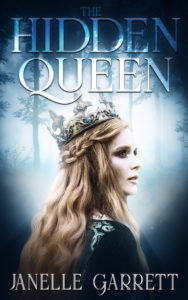 Royal weddings can be such a bother, especially when you can’t find a suitable Fred Astaire to dance with the hat rack. In Janelle Garrett’s The Hidden Queen, a farm girl learns she’s really royalty. Then, early in her reign, she must determine for the sake of her people the person with whom she’ll finally walk the aisle. But realpolitik keeps this story from being yet another typical romance, because our heroine’s decision could create enemies as well as needed allies. Once readers find serious drama with our heroine’s servants, threats to her authority from her close friend’s religious ideas, and the fact that her proposed groom isn’t even royalty, The Hidden Queen turns out to be a surprisingly smart story.
Royal weddings can be such a bother, especially when you can’t find a suitable Fred Astaire to dance with the hat rack. In Janelle Garrett’s The Hidden Queen, a farm girl learns she’s really royalty. Then, early in her reign, she must determine for the sake of her people the person with whom she’ll finally walk the aisle. But realpolitik keeps this story from being yet another typical romance, because our heroine’s decision could create enemies as well as needed allies. Once readers find serious drama with our heroine’s servants, threats to her authority from her close friend’s religious ideas, and the fact that her proposed groom isn’t even royalty, The Hidden Queen turns out to be a surprisingly smart story.
Best for: Young and college-age adults.
Discern: Some ethical and moral concerns are left unresolved, possibly to continue in later books.
Living in Times of Dragons
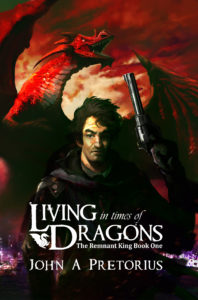 Dragon scales aren’t soft. Even the slightest shove can skin you. And Roger Rommel, a sixty-year-old security contractor fleeing a dark past, faces much more than abrasion when a flying lizard tears a hole in a courthouse just to apprehend him. John A. Pretorius’s Living in Times of Dragons crashes out of a wild imagination. It’s a shot across the bow of Christian fiction. And it’s a whirlwind of ancient conspiracies and alien worlds seen through the passionate, contemplative eyes of a Christian father haunted by sin. In Pretorius’s hands, a potentially cartoonish concept matures into something with real heft. Raw, bizarre, and in need of another copyedit, the story roars ambitiously from the veldt of South Africa to the jungles of Central America—tapping into pathos that pushes human endurance, blowing open a gateway to a vast, fantastical milieu ripe for full-fledged fandom.
Dragon scales aren’t soft. Even the slightest shove can skin you. And Roger Rommel, a sixty-year-old security contractor fleeing a dark past, faces much more than abrasion when a flying lizard tears a hole in a courthouse just to apprehend him. John A. Pretorius’s Living in Times of Dragons crashes out of a wild imagination. It’s a shot across the bow of Christian fiction. And it’s a whirlwind of ancient conspiracies and alien worlds seen through the passionate, contemplative eyes of a Christian father haunted by sin. In Pretorius’s hands, a potentially cartoonish concept matures into something with real heft. Raw, bizarre, and in need of another copyedit, the story roars ambitiously from the veldt of South Africa to the jungles of Central America—tapping into pathos that pushes human endurance, blowing open a gateway to a vast, fantastical milieu ripe for full-fledged fandom.
Best for: Adults seeking hard-boiled high fantasy.
Discern: Strong bloody violence, harsh cursing, intense emotional and psychological distress, depictions of drug use and alcohol abuse, brief sexual innuendo, and a magic system that resembles astral projection.
Oath Sworn
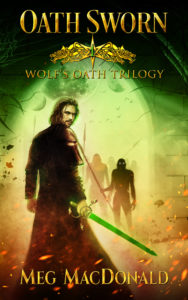 The more things change, the more difficult our challenge to adapt to those changes, especially when they involve people and failed responsibilities. While there’s plenty of aerial swashbuckling and adventure and even political sparring in Meg MacDonald’s Oath Sworn, the central conflict unfolds between two people—a young boy who’s something of a priest, and the man who swore to be his guardian but couldn’t prevent him from going missing. When the boy suddenly returns, launching a flotilla of political and religious ramifications for several kingdoms, his friendship with his guardian grows strained under the weight of secrets left unspoken. Strange concepts and tumultuous dialogue can soar over the reader’s head, but this narrative moves at a riveting clip.
The more things change, the more difficult our challenge to adapt to those changes, especially when they involve people and failed responsibilities. While there’s plenty of aerial swashbuckling and adventure and even political sparring in Meg MacDonald’s Oath Sworn, the central conflict unfolds between two people—a young boy who’s something of a priest, and the man who swore to be his guardian but couldn’t prevent him from going missing. When the boy suddenly returns, launching a flotilla of political and religious ramifications for several kingdoms, his friendship with his guardian grows strained under the weight of secrets left unspoken. Strange concepts and tumultuous dialogue can soar over the reader’s head, but this narrative moves at a riveting clip.
Best for: Adult readers.
Discern: Some stronger language might discomfit some Christian readers; vague references to abuses that a certain enemy inflicted on both heroes.
The Savage War
 Arnacin was happy enough, but happiness is not everything. At only fifteen, he set sail alone in search of a place to be a hero. What he found was a place to be a soldier. Pledging aid in return for aid, Arnacin joined Mira’s war against the savages, only to discover how right and wrong can blur into each other. With The Savage War, Esther Wallace spins a tale that balances moral conviction with moral complexity. The right side of the war is hard to find. Gentle romance and subdued supernatural elements add to the dominant theme without displacing it. The characters’ motivations are not always persuasively established, and the novel takes on an episodic feel as certain events leave no lasting impact. Still, many readers will welcome the moral complexity and religious hints of this fantasy tale.
Arnacin was happy enough, but happiness is not everything. At only fifteen, he set sail alone in search of a place to be a hero. What he found was a place to be a soldier. Pledging aid in return for aid, Arnacin joined Mira’s war against the savages, only to discover how right and wrong can blur into each other. With The Savage War, Esther Wallace spins a tale that balances moral conviction with moral complexity. The right side of the war is hard to find. Gentle romance and subdued supernatural elements add to the dominant theme without displacing it. The characters’ motivations are not always persuasively established, and the novel takes on an episodic feel as certain events leave no lasting impact. Still, many readers will welcome the moral complexity and religious hints of this fantasy tale.
Best for: Middle-grade and YA audiences; fantasy fans.
Discern: Battle sequences and violent deaths, but none graphic; one instance of brief and non-explicit torture; someone is drugged against his will; two teenage heroes are affirmed in their rebellion against parental and governmental authority.
Speed of Sight
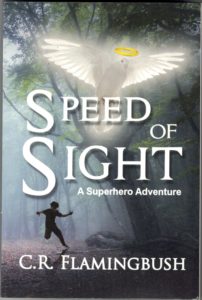 In Speed of Sight, C. R. Flamingbush presents Jericho, a drab town where everyone observes rigid rules. So when his friend hands him a banned comic book for safekeeping, Pete can’t resist opening it. It’s no ordinary book: with a bright light, it rescues Pete and his friend from bullies. Pete, meanwhile, gets tagged by the author of his own story for some special super powers. Now he can run amazingly fast instead of stumbling all the time. Echoing the stories he reads in the banned comic books, Pete fights the shadowy spirits that egg on the bullies, sicken his friend, and separate Pete’s parents. It’s a fun concept—comic book stories within Pete’s comic-book-style story, like plays within a play.
In Speed of Sight, C. R. Flamingbush presents Jericho, a drab town where everyone observes rigid rules. So when his friend hands him a banned comic book for safekeeping, Pete can’t resist opening it. It’s no ordinary book: with a bright light, it rescues Pete and his friend from bullies. Pete, meanwhile, gets tagged by the author of his own story for some special super powers. Now he can run amazingly fast instead of stumbling all the time. Echoing the stories he reads in the banned comic books, Pete fights the shadowy spirits that egg on the bullies, sicken his friend, and separate Pete’s parents. It’s a fun concept—comic book stories within Pete’s comic-book-style story, like plays within a play.
Best for: Older children and young teens who’d enjoy a comic book told in prose.
Discern: Themes of spiritual warfare, which lack a mention of Jesus or his place in this kind of world.
Tranquility
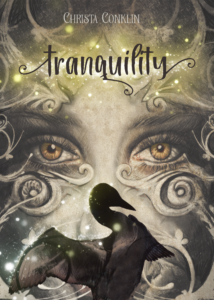 In the land of the blind, the one-eyed man gets his eye ripped out because he is different. In the human world of Christa Conklin’s Tranquility, similar differences are not welcomed. Drethene is a young lady whose red eyes stand out, and although she tries to hide her differences, others view her with suspicion and find her guilty of a crime in which she had no part. This is an arresting setup, but the story intervenes to downplay any struggles; that is, whenever Drethene appears to be in serious trouble, something happens to keep her from have too rough of a time. In the world of Tranquility, conflict and tension defer to the pleasantries of picnics with fairies and merfolk.
In the land of the blind, the one-eyed man gets his eye ripped out because he is different. In the human world of Christa Conklin’s Tranquility, similar differences are not welcomed. Drethene is a young lady whose red eyes stand out, and although she tries to hide her differences, others view her with suspicion and find her guilty of a crime in which she had no part. This is an arresting setup, but the story intervenes to downplay any struggles; that is, whenever Drethene appears to be in serious trouble, something happens to keep her from have too rough of a time. In the world of Tranquility, conflict and tension defer to the pleasantries of picnics with fairies and merfolk.
Best for: Teens and young adults.
Discern: Possible confusion about the message difference between two religious books, the Tranquility and the Sacred Writ.
Valiant
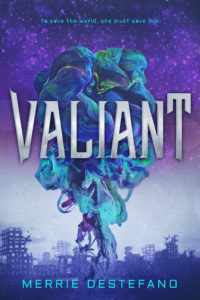 When a regular girl must travel through time to save her brother from an alien invasion, high-stakes action enters an endless loop. In Merrie Destefano’s Valiant, Sara knows only one thing for certain: if her brother dies, the world ends. So she repeats the same day over and over, attempting to save him in a new way each time and watching him die again and again until the time portal breaks and she’s given one final shot. Some rushed action and thin character development at the outset make the story difficult to get into, but once this story ramps up, it’s a thrilling read, with plenty of unexpected twists, a surprise ending, and pressing questions that demand a sequel.
When a regular girl must travel through time to save her brother from an alien invasion, high-stakes action enters an endless loop. In Merrie Destefano’s Valiant, Sara knows only one thing for certain: if her brother dies, the world ends. So she repeats the same day over and over, attempting to save him in a new way each time and watching him die again and again until the time portal breaks and she’s given one final shot. Some rushed action and thin character development at the outset make the story difficult to get into, but once this story ramps up, it’s a thrilling read, with plenty of unexpected twists, a surprise ending, and pressing questions that demand a sequel.
Best for: Young adults who enjoy fast-paced action, aliens, time travel, dystopia, and futuristic technology.
Discern: Lots of violence and gore, open portrayal of drugs and drug use.

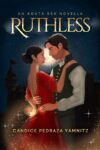

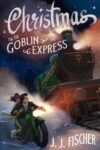

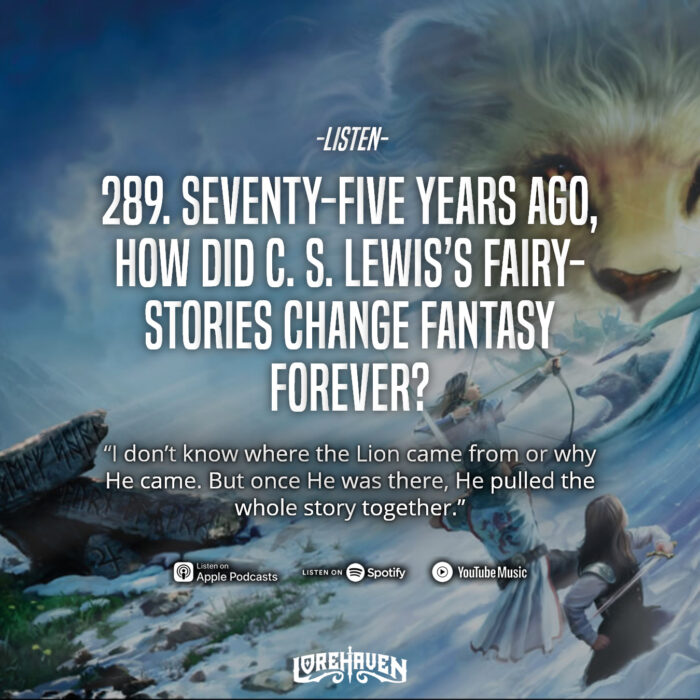
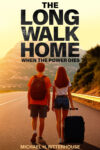
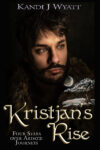

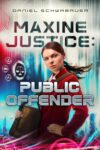
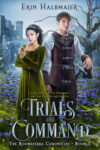
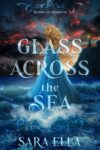

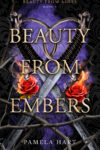
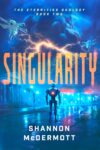
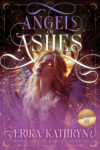
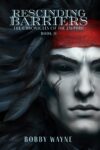
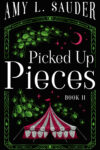
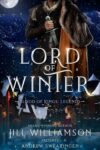
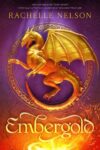

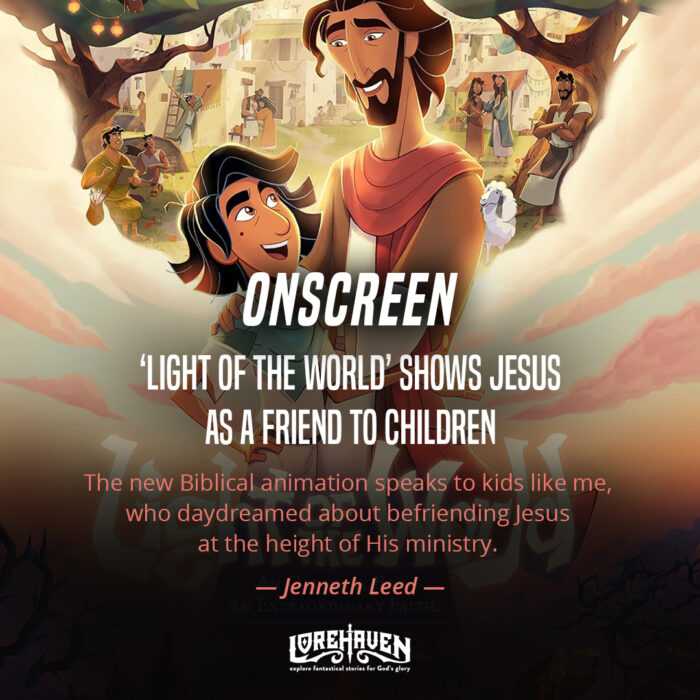
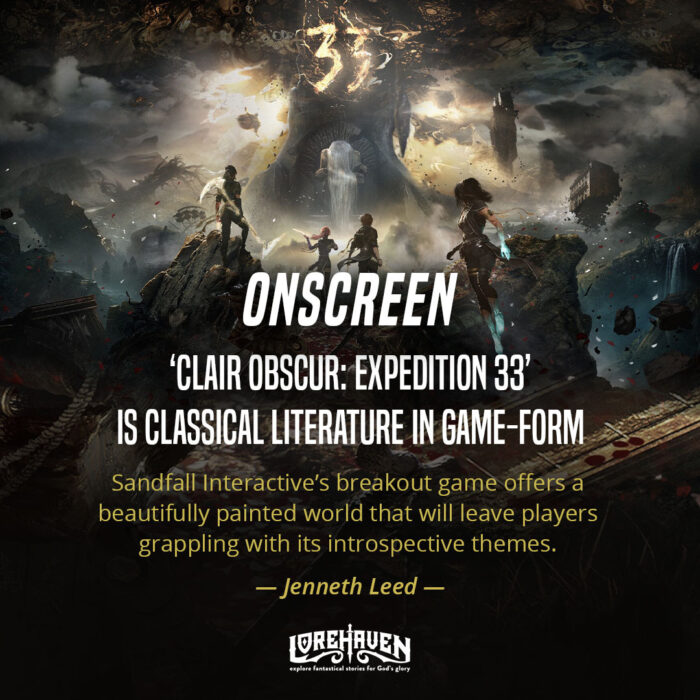
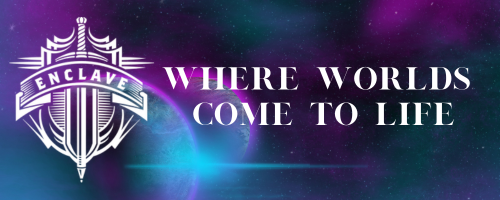











Share your fantastical thoughts.